Toilet Sizes: Standard and Minimum, Helpful Guidelines
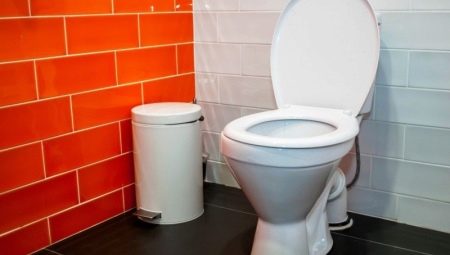
Determining the minimum size of the restroom is one of the most important tasks when planning an entire living space. Many homeowners are rather frivolous about calculating the dimensions of a bathroom, but its area is extremely important, since it makes it possible to create an ergonomic space in this functional area.
Norms
A bathroom plays an important role in creating a comfortable and functional home. Its size largely depends on:
- how you will place all the main plumbing structures (bath, shower cubicle, as well as a sink, washbasin and bidet);
- how engineering communications will be laid;
- what types of finishes can be used.

The minimum permissible area of toilets, as well as other parameters related to the dimensions of these premises, are legally regulated through GOSTs and SNiPs - they establish the footage of baths and toilets in residential apartments, as well as the permissible parameters for public buildings for various purposes.
When starting redevelopment work in your home, the entire legal framework in this area should be carefully studied... Otherwise, you run the risk of facing the fact that the result of your work may be recognized as not complying with applicable standards, illegal and subject to dismantling.
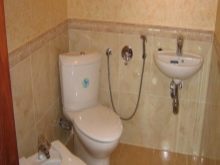


Please note: for Belarus, as well as Ukraine and a number of other CIS countries, SNiP standards regarding the footage of bathrooms may differ significantly from those approved in our country. The standards for some regions of the Russian Federation may have their differences.
A certain group of restrictions also applies to the peculiarities of the placement of sanitary rooms in apartment buildings. So, you may be refused approval of redevelopment if you intend to place a toilet above the kitchen or above the living area, the only exception can be 2-level apartments with a large footage.
The only option when the construction and redevelopment of the toilet can be carried out without taking into account the standard - this is carrying out work in a cottage, private house or in the country. If you are not going to connect intra-building communications to a common sewer riser and a central water supply system, then there are no requirements for strict adherence to current regulations.

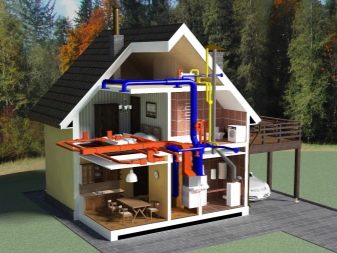
Let's figure out what the optimal size of a sanitary room is. Dimensions of the hygienic room in the apartment:
- depth - not less than 1.2 m;
- width - not less than 0.8 m;
- ceiling height - not less than 2.5 m;
- the distance from the toilet bowl to the inclined plane of the roof (for toilets equipped in the attic) - 1.05-1.1 m;
- the ceiling height in the hallway near the entrance to the restroom is at least 2.1 m.

Additionally, recommendations are made regarding the placement of plumbing and the distances between the individual elements of the complete set of the bathroom:
- between the toilet bowl and the bidet - from 25 cm;
- a bowl in front of the bathroom - from 70 cm of unoccupied area;
- near the toilet - from 60 cm;
- on both sides of the toilet - from 25 cm;
- in front of the sink - from 70 cm.
In accordance with SNiPs, the toilet door can only open outward; it is not recommended to install structures that swing inward.
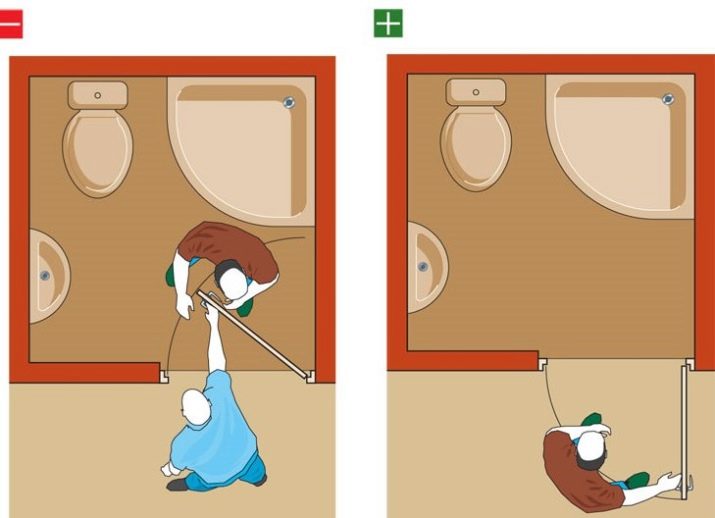
The exit from the toilet should lead either to the hallway or to the corridor - it is not recommended to place it near the kitchen, dining room or living rooms.
Bathrooms installed for users with disabilities are subject to separate regulation. In accordance with the accepted standards for the disabled, the parameters of the restroom should have the following dimensions:
- width - 1.65 m;
- depth - 1.8 m.
According to the law, the installation of additional plumbing equipment (bidets and urinals) is optional, but their installation is desirable. In addition, it is necessary to select the optimal location of the plumbing, so that the user in the wheelchair can easily get there without outside help.
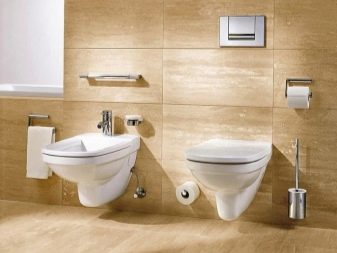

Mandatory is installation of handrails near the toilet and washstand, the optimal height for their placement is 75 cm.
It is desirable that on the side where the person is transplanted from the chair to the toilet, the last one should be folding.
Typical dimensions in residential buildings
There are standard and minimum sizes.


Standard
In previous years, toilets in houses were not very large. For example, in "Khrushchev" the dimensions of the combined room (bathroom plus toilet) did not exceed 3.8 meters. In houses with a modern layout, large areas are allocated for a hygienic room. For example, even in small apartments, the size of the bathroom is about 4 sq. m, for apartments over 60 sq. m, the footage of the hygienic room can reach 6 sq. m.
The toilet in luxury housing occupies a space of 9 square meters. m - this area is quite enough to equip the room with maximum comfort and equip it with all the main plumbing fixtures, as well as modules for storing cosmetics, household chemicals and dirty things. Such rooms can also accommodate an ironing board, on which you can iron bed linen and personal belongings of the owners.
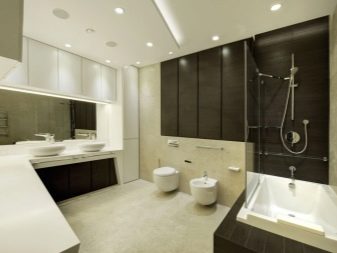
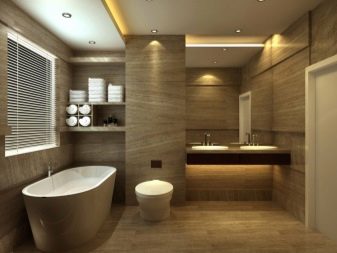
If we are talking about new buildings, then, regardless of the area of the apartment, developers adhere to several basic rules:
- in one-room dwellings and studios, the parameters of the bathroom should be such that users can freely place a bathtub with a washbasin, as well as a toilet bowl;
- in residential apartments, consisting of two or three rooms, it is usually assumed the arrangement of separate bathrooms.
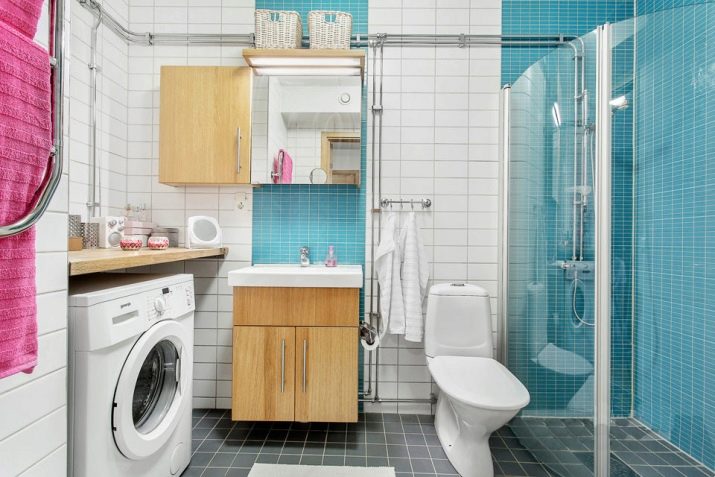
Minimum
In small families, as well as in private housing construction of the old type, the size of the bathrooms can be much lower than the current standards - usually their footage does not exceed 1.8-2 sq. m.
However, even in this case, you can correctly plan the space so that the room fulfills all its functions. For example, in a lavatory with a size of 1x1 m, you can save space by angular placement of the installation toilet, thus freeing up space for a sink and even a small cabinet with shelves.
The 1x1.5 layout is already more convenient, here the location of the toilet does not interfere with the installation of the washstand at the entrance.
Tip: If the length of the restroom allows, you can hang the washing machine over the toilet. In this version, an installation will be located under the machine, and the bowl will not move away from the wall by 15-20 cm, but to the depth of the washing machine - 45-50 cm.
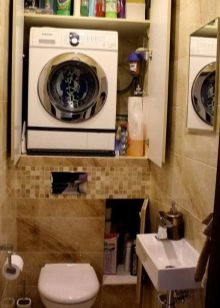
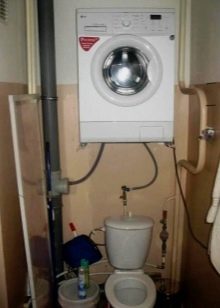
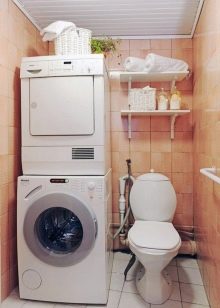
Dimensions of the combined toilet with a bath
The footage of the combined restroom in accordance with accepted standards should provide for the possibility of installing a bath or shower with a pallet, as well as installing a washstand and a toilet in compliance with the recommended distances between individual elements of the room specified in SNiPs.

It should be noted that combined sanitary facilities not for panel buildings. The reason for this is that in such buildings, plumbing booths are used to equip a bathroom - these are ready-made, assembled blocks that are simply built into the structure of a residential building. In accordance with the adopted layout a sanitary stall is a separate bathroom with a space for a toilet, as well as an area for a washing room, the compartments are separated by a solid partition. The dimensions of the cabins in panel construction are standardized, the location of the washstand and bathtub in them corresponds to the existing standards.
In brick housing construction, a combined bathroom is equipped exclusively in one-room dwellings, while the footage of the room should allow all the basic plumbing to be installed.
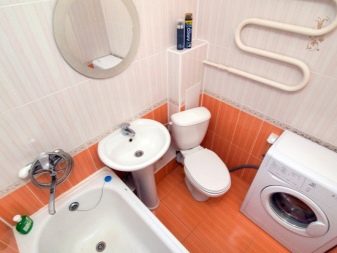
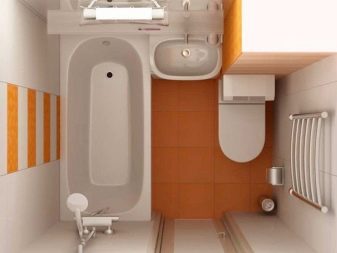
What can be in a private house?
A bathroom, arranged in a cottage or in a small private house, has no restrictions, its dimensions depend only on the personal preferences of the owner, as well as on the technical capabilities of the room as a whole.
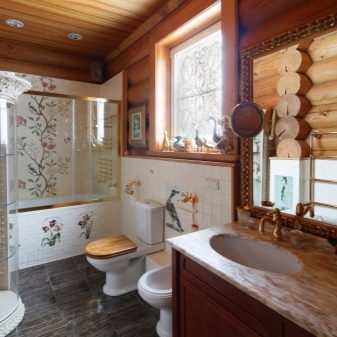

However, this only applies to situations where the restroom is located inside the house. If you are installing an outdoor toilet, then the choice of location will have to be given special attention, since in this case certain norms and requirements also apply.
SNiP establishes the following rules for choosing the location of the drain pit:
- the closet should be at least 10-12 m from any residential building;
- the zone of accumulation of sewage must be removed at least 25 m from a drinking well or stationary water source;
- the toilet area should be 1 m or more from the demarcation fence;
- an outdoor bathroom should be located at least 12-13 m relative to the utility block, cellar and basement;
- there must be at least 4 m to the nearest fruit trees.

In order to correctly determine the parameters of outdoor toilets, first you need to think over the type of construction of such a bathroom. Most often they use the option for a country toilet, which involves a drain pit. In more modern houses, a backlash closet is issued, it implies the installation of a septic tank with reliable waterproofing, such a design prevents clogging of groundwater and earth.
A less common solution is a dry closet, it is installed inside a small cabin, but the difficulties of caring for it have led to a low demand for such models.
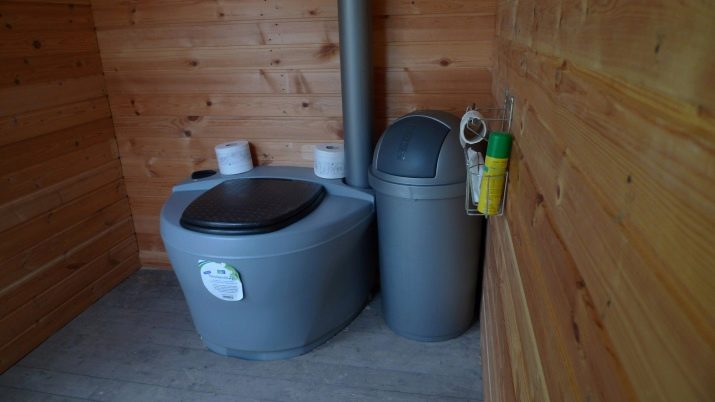
How to calculate?
When planning a bathroom, you need to find its optimal size and configuration. On the one hand, the closet must accommodate sanitary and household appliances necessary for carrying out hygiene procedures and household work. On the other side, it shouldn't occupy most of the dwelling.

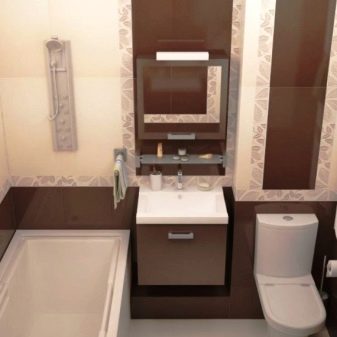
It has been noticed: if the slightest opportunity arises to calculate the footage of a bathroom on their own without external restrictions on dimensions, many homeowners think about a spacious room where they do not need to save every meter. But as practice shows, a large restroom is rather a waste of free space. If you adhere to the requirements of ergonomics, then the total required footage is calculated, focusing on the following provisions:
- for a shower stall you need 1.5-2.6 sq. m;
- for a bath - 2.4-3.5 sq. m;
- for a toilet with a cistern - 1.3-1.9 m2;
- for a washstand - about 1 m2.
The minimum footage of the restroom, taking into account the requirements for the remoteness of plumbing for a family of 4-6 people, is 7-9 square meters.
It is desirable that it be a rectangular room with a width of 2.4-2.6 m and a length of about 3.5 m.
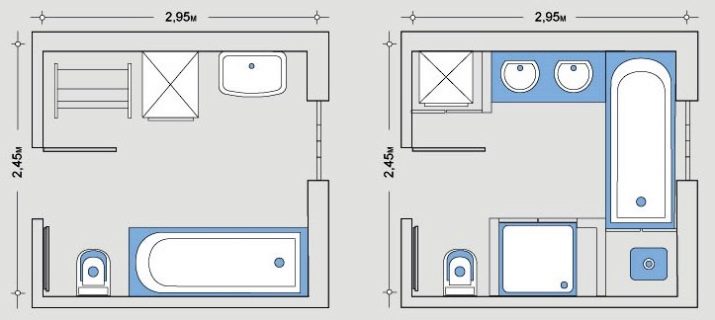
For an ergonomic shower and toilet layout, you need to know:
- standard sizes of toilets - 44x65, 40x60 or 36x65 cm;
- the height of a typical bath is 64 cm with legs and 48-51 cm without legs;
- dimensions of standard bathtubs - 78-80x160 cm or 78-80x170 cm, corner models - 150x150 cm or 160x160 cm;
- the size of shower cabins is 80x80, as well as 90x90 or 100x100 cm.
- bidet parameters - 37x54 or 40x60 cm;
- the minimum washbasin is about 40 cm wide.
The sizes of bathrooms and closets for users with disabilities are calculated taking into account the parameters of a wheelchair.
For information on what size the toilet should be, see the next video.





